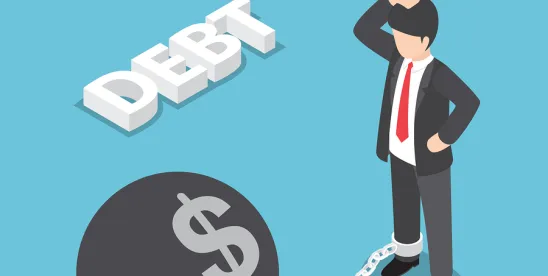Over the summer, we wrote about why health care companies may want to consider buying assets out of bankruptcy, taking advantage of the Bankruptcy Code Section 363 sale process (a “363 Sale”). We are back with our second post, to provide more detail to the process and discuss some pros and cons of 363 Sales.
As a refresher, a 363 Sale couples a flexible and fast process with ample liability protection for willing buyers. The primary benefit of a 363 Sale is that a buyer can acquire the debtor’s assets free and clear of virtually all liens, claims, and interests burdening the assets and the debtor. And when Section 363 is coupled with the “assumption and assignment” provisions of Section 365 of the Bankruptcy Code, a debtor is able to assign most contracts or leases that a buyer may wish to purchase, including contracts with ironclad anti-assignment language, provided that certain conditions are satisfied. When a target is experiencing severe financial distress, the benefit of acquiring assets “free and clear” is extraordinarily valuable.
From beginning to end, the 363 Sale process requires: (1) conducting accelerated diligence; (2) negotiating and executing a purchase and sale agreement; (3) filing the purchase and sale agreement and motion for a 363 Sale Order with the Bankruptcy Court; (4) final notice and marketing of the 363 Sale, including an auction for the assets if necessary; and (5) closing the transaction after the Bankruptcy Court enters the 363 Sale Order. From start to finish, the whole process can take less than 30 days from signing the purchase agreement until the court signs the 363 Sale Order.
363 Sale Process
-
Due Diligence. 363 Sales allow the buyer to conduct an accelerated due diligence process. Since the buyer will obtain the assets free and clear of virtually all liens, claims, and interests, a buyer can focus primarily on the business viability of the assets after closing. Buyer’s diligence will include meetings with current company management, review of any applicable “data rooms” set up by the debtor/seller’s sale professionals, and often negotiation of a non-disclosure agreement—all with the goal of confirming the existence and nature of the assets.
The buyer can also use the diligence period to review any key business contracts it may wish to include in the 363 Sale through Section 365 of the Bankruptcy Code. One area that may require particular attention are anti-assignment provisions in employment contracts of key professionals, as those may not necessarily be overridden by the relevant Bankruptcy Code provisions. In industries like health care where professional providers are highly sought after and essential to the business, being able to employ the key providers post-closing is often critical. If necessary, through the negotiation of the purchase and sale agreement, the stalking horse can negotiate closing conditions such as the execution and delivery of employment agreements with key personnel.
-
Negotiating and Executing a Purchase and Sale Agreement. A buyer that has conducted diligence and wishes to act as the stalking horse will begin negotiating a purchase and sale agreement with the seller. During this process, the buyer can select the preferred assets, seek assignment of key business contracts, and include “bidding protections” such as break-up fees, expense reimbursement, and other stalking horse protections, subject to Bankruptcy Court approval.
-
Filing the Purchase and Sale Agreement and Section 363 Sale Motion with the Bankruptcy Court. Once buyer and seller have agreed on the terms of the purchase and sale agreement, the parties will file the agreement, along with the Section 363 Sale motion, with the Bankruptcy Court. In these filings, the stalking horse bidder will have the opportunity to influence the bidding procedures for any auction. As one example, the stalking horse’s purchase and sale agreement becomes the template that counter bidders must follow, and the bidding procedures may require that any counter bidder to qualify must provide a purchase and sale agreement marked to show changes from the stalking horse’s purchase and sale agreement. This encourages the sale process to be as “apples to apples” as possible.
-
Final Marketing and Auction for the Assets in Bankruptcy. The stalking horse bid sets the floor price for the assets to be sold at the auction. The seller will use the court-approved bid procedures referenced above to market the sale and solicit higher and better offers for the assets. If the seller receives other qualifying bids, the seller and its advisors will conduct a formal auction, and then seek approval of the winning auction bid from the Bankruptcy Court. If the seller does not receive a competing bid, the seller will seek approval of the stalking horse bid and the issuance of a 363 Sale Order.
-
Closing the 363 Sale. Once the Bankruptcy Court enters the 363 Sale Order, the buyer will have the assurance it needs that the 363 Sale assets are free and clear of all liens, claims, and interests as the 363 Sale Order issued by the Bankruptcy Court will include such language.
363 Sale Pros and Cons
While there are many potential benefits of 363 Sales for both buyers and sellers, buyers and sellers should consider and be mindful of the following:
|
Pros |
|
|
Valuation/Free and Clear Federal Court Order |
Assets bought out of bankruptcy are often priced lower than when purchased through a typical M&A transaction and are acquired free and clear of virtually all liens, claims, and interests burdening the assets and the debtor. If faced with a seller creditor post-closing, a buyer can rely on the express language in a federal court's 363 Sale Order stating that the buyer acquired the assets free and clear of all liens, claims, and interests and preventing any such claims being made against the 363 Sale Order. In addition, at any hearing approving the 363 Sale Order, the buyer and seller will seek a finding from the court that the sale was conducted in good faith which, once the sale closes, further prevents any collateral attack or appeal of the 363 Sale Order. |
|
Speed |
363 Sales are a fast, cost-effective way for a buyer to acquire, and a seller to complete a sale of, assets. From start to finish, the whole process can take as little as 30 days. The speed of the process provides sellers/debtors with quick access to debt relief while preserving asset value for buyers. |
|
Operational Continuity |
During the bankruptcy proceedings, the seller/debtor is protected from creditor pressures, including attempts at foreclosure. Protection from creditors is especially helpful during and after the pandemic, as pressure from creditors and attempts at pursuing recourse against debtors will continue to increase. Creditor protection also helps retain asset value for the buyer and may further encourage a robust counter bidding process from the debtor/seller’s perspective. |
|
Limited Diligence |
Since the buyer will acquire the assets free and clear as approved by the court, the debtor need only provide diligence specific to the assets and contracts acquired, avoiding additional strain on a spread-thin management team that is trying to mitigate losses and unwind or save a struggling business. Compared to a formal transaction outside of bankruptcy, the seller is not expected to give robust reps and warranties because the buyer will purchase the assets free and clear of liens, claims, and encumbrances under the federal Bankruptcy Court’s robust Sale Order. |
|
Third Party Consents |
Generally, contracts and leases purchased (in bankruptcy parlance "assumed and assigned") through bankruptcy are not subject to third party consent. This avoids the "hold-up" risk of contract counterparties seeking to renegotiate key economic terms in such contracts and leases. It is important to note that to assign a contract to the buyer, existing defaults must be cured and there must be "adequate assurance of future performance" by the buyer. In each case, those determinations are made by the bankruptcy judge and not by the third party, further negating such "hold-up" risk. |
|
Pole Position / Stalking Horse |
A buyer can take the pole position and become the stalking horse if it is the first to meet with seller management. Early access to management allows the stalking horse to conduct diligence and assess the operational viability of the seller and seller’s assets. |
|
Negotiation and Execution of Purchase and Sale Agreement and Buyer-Friendly Terms |
A stalking horse is able to identify assets to be purchased and limit the liabilities to be assumed. As discussed above, the stalking horse also can shape the deal structure and set buyer-friendly terms, including timing, deposit requirements, bidding requirements (i.e., expense reimbursement and break-up fees), and closing conditions. While the stalking horse can set buyer-friendly terms, those terms must be within reason. For example, most jurisdictions, absent extenuating circumstances, will not allow break-up fees that go beyond encouraging stalking horse bids and veer into "chilling" a competitive bidding process. |
|
Greater Certainty of Closing |
Since a seller has the ability to isolate and sell a portion of the business as part of a 363 Sale and 365 assignment, and since the Bankruptcy Court enters the final order for the sale, there is greater likelihood the sale will come to fruition because the buyer doesn’t have to take the bad with the good. That is, the buyer has identified the portions of the business it wants to take on and will get those assets free and clear. Although a stalking horse buyer runs the risk of losing the deal if it is outbid, the seller can generally be comfortable that the deal will move forward once the purchase agreement is signed. |
|
Saving the Business |
A seller is able to get highest and best value from 363 Sale assets, including contracts with anti-assignment language, on a relatively rapid basis, as compared with the potential for seeing its assets languish and further deteriorate in value without a 363 Sale. In fact, if a seller is experiencing severe liquidity constraints, a potential buyer may also serve as post-bankruptcy lender advancing funds to the debtor/seller pursuant to a so-called court approved "DIP loan." Often, the DIP loan can be "credit bid" as part of the sale consideration. |
|
Cons |
|
|
Public Process |
A bankruptcy proceeding is a public process, including public filings. Once the executed purchase and sale agreement and motion for sale order are filed with the court, the identity of the seller/debtor will become public. The filing also opens the bankruptcy proceeding to competing bidders who may outbid the stalking horse. |
|
Cost/Timing |
While formal bankruptcy proceedings may move quicker than traditional M&A transactions, the negotiation of bid procedures and stalking horse terms from bankruptcy case "parties in interest" (e.g., unsecured creditors committees and secured lenders) can slow the transaction. The Mintz bankruptcy team is well experienced in managing this process and limiting potential delays. |
|
No Exclusivity and Limited “Carve Outs” |
Covenants such as exclusivity and no-shop are generally disfavored in the bankruptcy process. The winning bid, selected at auction and subsequently approved by the Bankruptcy Court, will be the "highest and best" bid. Generally, the highest and best bid is simply the highest bid, as it provides the most value to seller's creditors. However, closing contingencies (e.g., financing additional due diligence, requiring third party consents as may be necessary) can turn the bid that is the greatest dollar amount into something less than the highest and best bid. For special considerations with respect to the "highest and best" bid, please see below. |
|
Limited Indemnification |
When an asset is purchased out of bankruptcy, the buyer has very limited recourse and indemnification post-closing. On the other hand, the buyer obtains assets from bankruptcy free and clear of all liens, claims, and interests. As such, confirming assets and contracts will be essential to the ultimate success of any winning buyer. For example, the buyer will want to confirm whether a contract counterparty has access to substitute or supplemental services, which could diminish the contract value for the buyer. |
|
Losing the Deal |
Since the Bankruptcy Court is obligated to approve the highest and best bid for the assets, it is possible for a stalking horse buyer to be outbid during the auction. A stalking horse buyer can mitigate this risk when it is negotiating the purchase agreement and set bidding procedures, timing for the final marketing, bid increment requirements, break-up or topping fees, and expense reimbursement if the stalking horse’s bid is not ultimately selected. |
Special Considerations
As a general rule, it is the bankruptcy process and Bankruptcy Court—with input from the parties before it—that determine what is the highest and best offer in a bankruptcy sale, and it is the Bankruptcy Code and federal bankruptcy rules of procedure that set and inform the sale process. However, the Bankruptcy Code provides that when a debtor is not a "moneyed business, commercial corporation or trust" (generally interpreted to mean a not-for-profit business), the debtor must also comply with applicable non-bankruptcy law regarding the transfer of property. For example, many states require that various conditions be met before a not-for-profit hospital can sell its assets. Whether it is the Bankruptcy Court or a state authority that makes the determination as to whether such conditions are met is not entirely clear and has been the subject of recent litigation.








 />i
/>i
